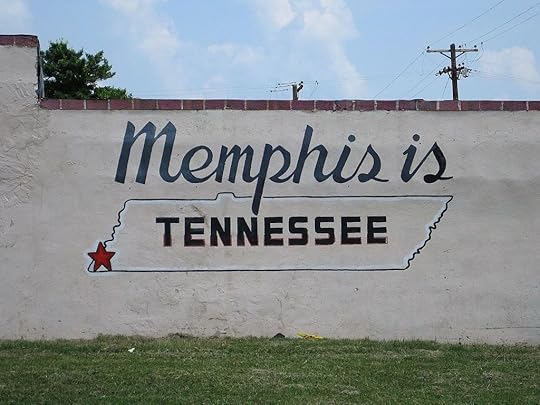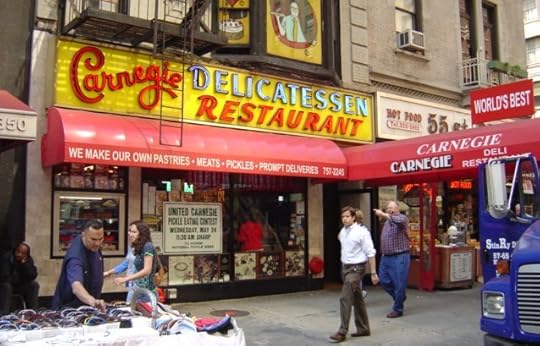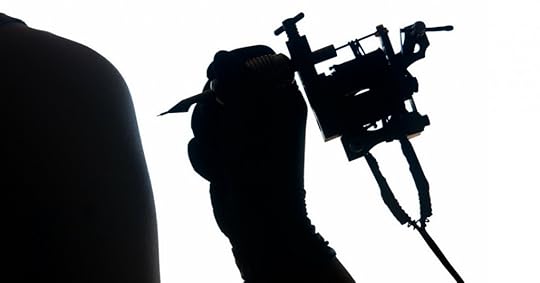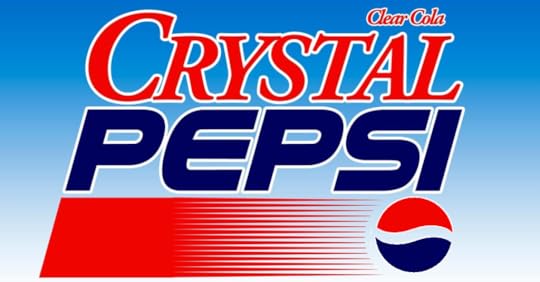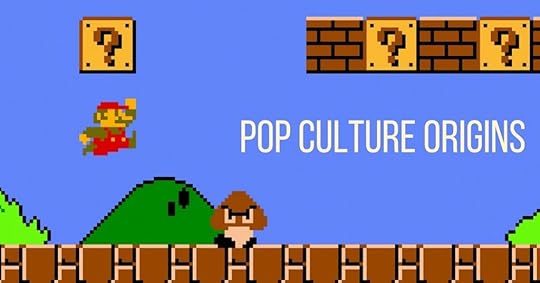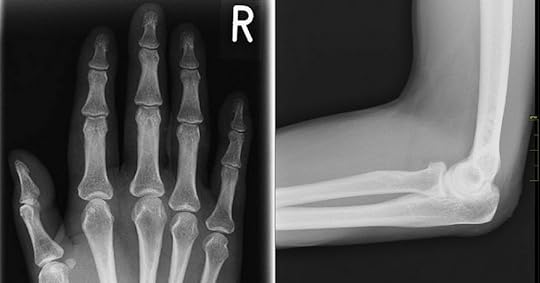Bathroom Readers' Institute's Blog, page 75
October 6, 2016
Ask Uncle John Anything: What’s All This on the Telly, Then?
Uncle John knows pretty much everything—and if he doesn’t, he heads his massive research library, or puts one of his many associates on the case. So go ahead: In the comments below, ask Uncle John anything. (And if we answer your question sometime, we’ll send you a free book!)
Why are British TV seasons so short?
First off, in the United Kingdom, the British Broadcasting Corporation and its viewers don’t call the annual collection of a long-running TV program’s episodes a “season.” They call it a series. Confusingly, a TV show can also be called a series, meaning that a successful series in England can run for many series. (Also in English TV, news anchors are called newsreaders and game show hosts are presenters.)
But the one quirky fact everybody knows about British TV is that their seasons—sorry, series—are painfully short. There you are, getting really into some costume drama set during an outbreak of cholera or some hilarious comedy featuring men in wigs and dresses and boom, six episodes in and it’s over. Contrast this to an American network TV show which churns out 22 or so episodes a year, or a cable series that makes 12. How do the English get away with making just six?
It’s because the American TV system and the British TV system are very different, which is partly due to how TV writers are treated. American TV is made by committee. Producers run the show (literally), buying TV show concepts and pilot scripts from writers, and then turning them into huge productions with big writing staffs. If a show has a dozen writers (and most American sitcoms do), then spreading out two dozen episodes among them all is a reasonable workload.
British TV provides more autonomy to its writers. One or two writers pitch their ideas to the BBC, and if they get the green light, they go and write every episode of their show. (The state-run BBC makes hundreds of shows, and small writing staffs help keep budgets down.) For just one or two individuals to come up with six shows, and quickly, is hard work. After that, they need a break.
The post Ask Uncle John Anything: What’s All This on the Telly, Then? appeared first on Trivia Books and Facts | Uncle John's Bathroom Reader.
October 4, 2016
Historical TV Goofs
When a TV series takes place in the past, writers, set designers, and prop masters do their best to make sure that all the details are historically accurate. But sometimes they make mistakes. This was first published in our 29th annual edition, Uncle John’s Uncanny Bathroom Reader.
Happy Days (1974–84)
Scene: Howard, Marion, and Joanie Cunningham are on their way to the movies. Ralph asks them what they’re going to watch, and Joanie says Psycho, the Alfred Hitchcock thriller.
Goof: The episode is set in 1957. Psycho wasn’t released until 1960.
Little House on the Prairie (1974–83)
Scene: The unnamed, white-bearded owner of a chain of fried chicken restaurants comes to town and offers Mrs. Oleson a chance to buy a franchise. She refuses the offer.
Goof: The man is strongly suggested to be Colonel Sanders, and his restaurant chain Kentucky Fried Chicken. But Sanders was born in 1890, opened his first restaurant in 1930, and started franchising in 1952. Little House takes place in the 1870s.
Mad Men (2007–15)
Scene: Advertising executive Don Draper coins a new slogan for Lucky Strike cigarettes: “It’s toasted.”
Goof: The show is set in the 1960s, and Lucky Strike first used that slogan in 1917.
Downton Abbey (2010–15)
Scene: Lady Edith visits a doctor in London. The nameplate outside his office includes the prefix “Dr.”
Goof: The sign also says “FRCS,” which means the doctor is a Fellow of the Royal College of Surgeons. In the 1920s, British doctors who belonged to this order would have been listed as “Mr.”, not “Dr.”
The Tudors (2007–10)
Scene: King Henry VIII gets married several times. Each time, his bride wears a white dress.
Goof: Wearing a white bridal gown wasn’t traditional in Europe until Queen Victoria of England popularized the style in 1840. The Tudors is set in the 1500s.
The post Historical TV Goofs appeared first on Trivia Books and Facts | Uncle John's Bathroom Reader.
The Unluckiest City in Football
Memphis is one of the biggest metropolitan areas in the U.S. to not have a team in the NFL. But it’s not for a lack of trying. Here’s a brief history of how pro football just never seems to come (or stick around) to the football-loving Tennessee city.
In 1974, the NFL announced its first expansion since its merger with the American Football League in the late ‘60s. Five far-flung cities were selected as candidates for two new franchises: Honolulu, Phoenix, Seattle, Tampa, and Memphis. The league ultimately decided on Seattle and Tampa, creating the Seattle Seahawks and Tampa Bay Buccaneers, respectively.
Seeing the demand for football in Memphis, the owner of a team in the upstart World Football League decided to move his franchise. Canadian businessman John Bassett moved his Toronto squad to Memphis before the league even began play in 1974, and lured away NFL stars like Larry Csonka and Jim Kilick. The Memphis Southmen finished the season 17-3, the league’s best record. The Southmen (which changed names to the Grizzlies for season number two) had one of the biggest fan-bases in the league (Elvis Presley was even spotted at games), but it didn’t matter: The World Football League folded after its second season in 1975.
Undaunted, Bassett attempted to get the Grizzlies into the NFL. He produced a local telethon to drum up support and wound up with more than 45,000 people pledging to buy season tickets should Memphis be the next NFL city. The NFL declined to absorb the Grizzlies—after all, it had just expanded by two teams, and had rejected Memphis in that very round of expansion. So Bassett sued the NFL, claiming that it was a violation of federal antitrust laws to deny his team a spot in the league. The case was held up in courts for 10 years, by which point Bassett had moved on to owning a team in another new league, the USFL.
Memphis was in the running for an expansion team again in the early ‘90s. Among the ownership group was the consortium that controls the estate of Elvis Presley, so the team that only existed as a possibility went ahead and named itself the Hound Dogs. In 1993, the NFL named its next two cities: Charlotte and Jacksonville.
Shortly after Memphis lost out on an NFL team (again), the Canadian Football League announced that it would be placing teams in the U.S. This time, Memphis got lucky. But Elvis Presley Enterprises dropped out, necessitating a name change from the Hound Dogs to the Mad Dogs. The team folded after only a year of play.
The NFL finally came to Memphis in 1997, but only temporarily. The Houston Oilers relocated to Memphis and became the Tennessee Oilers. While team operations were based across the state in Nashville, a stadium there wasn’t yet ready, so games were played in Memphis. Two years later, the Nashville stadium was ready, and the Oilers—by then, the Titans—left town for good.
The post The Unluckiest City in Football appeared first on Trivia Books and Facts | Uncle John's Bathroom Reader.
October 3, 2016
The Deli is Closed
How do you get to Carnegie Hall? Practice. How to you get to the Carnegie Deli? Quickly—the New York institution is closing down at the end of the year.
The Carnegie Deli opened at 845 7th Avenue in Manhattan in 1937. Located just down the street from the famed Carnegie Hall, the deli became a landmark, not just for New Yorkers, but for the world of food. Its gigantic corned beef, pastrami, and brisket sandwiches helped bring delicatessen-style food into the mainstream, expanding its popularity beyond the Eastern European and Jewish immigrant communities who brought such fare to the U.S. in the late 19th century. (In fact, beef was so much more plentiful in the U.S. than it had been in Europe that a few kind of deli meat was invented by New York delis in the 1880s: pastrami, which is spiced, smoked, and slow-cooked brisket sliced thin. Pastrami is the main ingredient on the Carnegie Deli’s signature item: the four-inch tall pastrami sandwich served on rye. (It also offers a just as tall corned beef and brisket sandwich, nicknamed “The Woody Allen.”)
But better go get one while you can, because Marian Harper Levine, whose family bought the Carnegie Deli in 1976, announced last week that the restaurant will shut down at the end of the year. Levine told her 60 employees last week that “the early mornings to late nights have taken a toll, along with my sleepless nights and grueling hours that come with operating a restaurant business.”
A lot of that stress came from rapidly rising beef prices. Since 2013, wholesale beef prices have risen a staggering 47 percent. Even at $20 to $30 for their sandwiches—their most popular menu items—the Carnegie Deli’s profit margins were as thin as the meat on those sandwiches. (Not helping the Carnegie’s prospects: Just last year it was closed down for 10 months by its natural gas provider for an unpaid bill of $40,000.)
While the flagship deli itself will disappear, the Carnegie name will not. A New Jersey wholesale meat processing facility and bakery will produce products bearing the “Carnegie Deli” name. Remaining open will be franchised locations at casinos in Las Vegas and Pennsylvania.
The post The Deli is Closed appeared first on Trivia Books and Facts | Uncle John's Bathroom Reader.
Historical Ink
Tattoos are nothing new. Even some historical figures had them. This article was first published in our brand-new, 29th annual edition, Uncle John’s Uncanny Bathroom Reader .
Theodore Roosevelt (1858–1919)
The rugged president was a pioneer of modern masculinity, including tattoos. As a young man, he had the Roosevelt family crest inked onto his chest.
Andrew Jackson (1767–1845)
Jackson’s policies displaced thousands of Native Americans from their homes. Ironically, he had a tomahawk tattooed on his inner thigh.
Winston Churchill (1874–1965)
Though Churchill spent his military career in the army, he had a naval anchor tattooed on his arm. (His mother, Lady Randolph Churchill, had a snake tattooed on her wrist.)
Barry Goldwater (1909–1998)
The U.S. senator from Arizona and father of modern conservatism got a crescent moon and four dots tattooed on his hand. It’s the symbol of the Smoki People, an Arizona group dedicated to preserving southwestern Native American history.
Czar Nicholas II (1868–1918)
While visiting Japan in 1891, the future Czar Nicholas II of Russia got a dragon tattoo on his right arm.
James K. Polk (1795–1849)
Tattoos of Chinese characters meaning “strength” or “peace” may be clichéd now, but the idea was very unusual when President Polk did it. He had a tattoo of a Chinese character that translates to “eager.”
George P. Shultz (1920– )
Shultz had a distinguished career as Secretary of Labor and Secretary of the Treasury under President Nixon, and as Secretary of State under President Reagan. He also has a tattoo of a tiger, the mascot of his alma mater, Princeton University, on his butt.
Harold II (1022–1066)
The last Anglo-Saxon king of England died during the Battle of Hastings in 1066. His body was so brutalized that the only way his Norman foes could confirm his death was by the tattoo of his wife’s name, Edith, on his chest.
The post Historical Ink appeared first on Trivia Books and Facts | Uncle John's Bathroom Reader.
September 30, 2016
(Not) Made in China
Economists estimate that as much as 90% of all retail goods available in the United States are made overseas, particularly in China. These products include stereos, plastic toys, cups, belts, TVs, shoes, T-shirts, backpacks, telephones, coffee makers, toasters, and even religious memorabilia, just to name a few. Even though so many things are made in China, the things you might assume come from China probably don’t.
Fine China
Most fine china plates are bone china, a high-quality porcelain. The majority of the world’s china is made not in China, but in England, Italy, and the United States.
Tea
The phrase “not for all the tea in China” is misleading—India is the world’s largest grower of black tea, accounting for a third of the world’s supply. China, where tea originated, produces 10%.
Opium
Ever seen an old movie with a scene of Chinese men relaxing in an opium den? Opium isn’t Chinese. The British smuggled it into China from India.
Rice
Rice is closely associated with Chinese food. But China isn’t the world’s largest exporter. Not even close. Thailand shipped 7.5 million tons of rice in 2002. China exported only 2 million.
Chinese Food
General Tso’s chicken was invented in New York in 1972. Fried wonton originated at the 1904 St. Louis World’s Fair.
China Dolls
They were never made in China. Germany, France, and Denmark began making these porcelain dolls in the 1840s.
Fortune Cookies
They were invented in 1914 at San Francisco’s Japanese Tea Garden. While there are now fortune cookie factories in China, most are made by the Wonton Food Company in New York—they churn out 2.5 million cookies daily.
Chinese Checkers
Based on Halma, an earlier game played on a square board. Pressman Brothers created a star-shaped game board in 1928 and called it Chinese Checkers to capitalize on the popularity of mah-jongg.
The post (Not) Made in China appeared first on Trivia Books and Facts | Uncle John's Bathroom Reader.
September 27, 2016
How Coke Killed Crystal Pepsi
Back in stores right now for the first time in more than 20 years: Crystal Pepsi, a transparent cola that came and went from stores in the early ‘90s. Why would Pepsi revive a failed product? Because it wasn’t totally a failure—it did quite well at first…until Coca-Cola knocked it out of existence.
There are a lot of urban legends surrounding Coca-Cola, and with varying degrees of truth. For example, it’s true that in the late 19th century, the beverage contained a small amount of cocaine. It’s not true that in the 1980s, the company released New Coke as a ploy to take its original Coca-Cola off the market for a few months so the company could replace the sugar with high fructose corn syrup and have nobody notice. (HFCS was put into the mix years before New Coke’s disastrous rise and fall.)
But in 1993, Coca-Cola released a product specifically designed to fail. Why would a company do that? Aren’t businesses in the business of making money? Usually, but this time the product was purposely bad, a sacrificial lamb of a product born to die…and also taking a competitor’s product down with it.
After a successful round of test marketing, Pepsi introduced Crystal Pepsi in 1992. Among the marketing tactics: free bottles included with newspaper deliveries in major cities and a Super Bowl commercial featuring Van Halen’s hit “Right Now.” Crystal Pepsi was one of the most successful new soda product launches in history, with more than $470 million in sales in its first year.
Naturally, Coca-Cola was not pleased. So the company did what most companies do when a rival unveils a new product: They released a copycat product: Tab Clear. But according to Sergio Zyman, Coke’s chief marketing officer from the time, everything about Tab Clear was meant to confuse consumers. For example, Coke’s beverage was branded as Tab—a sugar-free drink that hadn’t been popular since the 1970s and which was sweetened with saccharine, which was forever linked with causing cancer in laboratory mice. Zyman theorized that a clear Tab was so unhip, so dangerous, and so sugar-free, that consumers would think the same thing about Crystal Pepsi, a product so new that they hadn’t formed any lasting impressions of it yet. Tab Clear would die and take Crystal Pepsi with it, the thinking went.
And that’s exactly what happened. In late 1992, Coca-Cola sent Tab Clear to stores. It didn’t sell well at all, but then, as 1993 wore on, Crystal Pepsi’s sales precipitously dropped off, too. By early 1994, sales of Crystal Pepsi—and Tab Clear—were so bad that both were discontinued.
The post How Coke Killed Crystal Pepsi appeared first on Trivia Books and Facts | Uncle John's Bathroom Reader.
September 26, 2016
Ask Uncle John Anything: Falling Back on Old Viewing Habits
Uncle John knows pretty much everything—and if he doesn’t, he puts one of his many researchers on the case. So go ahead: In the comments below, ask Uncle John anything. (And if we answer your question sometime, we’ll send you a free book!)
Why does the new TV season start in the fall?
The proliferation of cable networks and streaming services in recent years mean TV shows debut year-round now, but for the major broadcast networks—and over the last 50 years—new television programs debuted in September. (And new seasons of older showed resumed.)
It has a lot to do with the weather, and how that affects both the people who watch TV and the people who make it. Viewership levels drop in the summer because the weather is nice, the sun stays out until well into primetime, and so people are outside and having fun (or they’re seeing summer movies). But when fall hits, the weather gets chilly, the sun sets earlier, and people engage in indoor activities—like watching TV. New shows and new episodes of old shows show up right when this is happening.
But summer TV ratings are so low because the fare is mostly reruns. The people who make television want to be outside having fun, too. As the TV industry formed in the late 1940s, the big networks like NBC and CBS were offshoots of existing radio networks. The radio industry had been New York-based, and so the early TV industry was as well. During the summer, New York City happens to get very hot, very humid, and otherwise unbearable. The city’s wealthy traditionally retreat to summer homes in the Catskills or coastal New England. That group included radio executives and radio stars. So, the radio industry would shut down in the spring so its stars and creators could leave town. Radio in the summer was filled with reruns, and a similar thing happened when TV came along.
The post Ask Uncle John Anything: Falling Back on Old Viewing Habits appeared first on Trivia Books and Facts | Uncle John's Bathroom Reader.
September 23, 2016
Where Did These Pop Culture Ideas Come From?
It’s always interesting to find out where the architects of pop culture get their ideas. These may surprise you.
Super Mario Brothers
Mario, the Italian-American plumber in dozens of Nintendo video games, was modeled after the landlord at Nintendo’s New York offices in the 1970s.
Gollum
Actor Andy Serkis provided the voice and movements for the character in the Lord of the Rings films. He based the voice on the sound of his cat coughing up a hairball. Special effects artists modeled Gollum’s wiry, bony frame on punk rocker Iggy Pop.
“Smoke on the Water”
In 1971 the band Deep Purple was about to perform at a casino in Montreux, Switzerland. Just before they went on, a fan fired a flare gun into the crowd (the opening act, Frank Zappa, was performing). The casino burned to the ground, spreading huge plumes of smoke across Lake Geneva. The image stuck with the band and inspired the classic rock song.
NBA Logo
The National Basketball Association’s logo is red and blue with the white silhouette of a player dribbling a ball. The model: 1960s Los Angeles Lakers star Jerry West.
Taxi Driver (1976)
Paul Schrader created Robert De Niro’s creepy Travis Bickle character after reading the published diaries of Arthur Bremer, the man convicted of trying to assassinate presidential candidate George Wallace in 1972. In turn, John Hinckley, Jr. claims Taxi Driver inspired his attempt to murder President Reagan.
Columbia Pictures Logo
The woman in a toga holding a torch aloft is not based on the Statue of Liberty. The model for the logo—used since 1925—was Evelyn Venable, a bit player at Columbia.
American Flag Bumper Sticker
Peter Fonda got the idea to use American flags to decorate the motorcycle he rode in his 1969 film, Easy Rider, from John Wayne’s flag-emblazoned jacket in Flying Tigers (1942). But when Fonda rode the motorcycle through Los Angeles, police stopped him for desecrating the flag. “By 1970,” says Fonda, “every cop car had a flag on its fender.”
The post Where Did These Pop Culture Ideas Come From? appeared first on Trivia Books and Facts | Uncle John's Bathroom Reader.
September 22, 2016
Body Nickname Origins
Here’s a look at the science and naming stories behind some everyday stuff you can find right on your person.
Funny Bone
Knocking your funny bone on something certainly isn’t laugh-out-loud funny. The name references another kind of funny: You feel funny when it happens—a specific kind of jolting nerve pain that spreads throughout the whole body for just a second. (The common phrase “Tickle your funny bone” just complicates things unnecessarily.) Oh, and the funny bone isn’t really even a bone. Hitting it on a wall or door sends weird (okay, funny) nerve pain throughout the body because it is a nerve. It’s the ulnar nerve, and the pain comes from it getting pinched under a bone. And that bone is the long, elbow-to-shoulder spanning one called the humerus, pronounced humorous, which could also be why the funny bone is called what it is.
Charley horse
That’s the nickname for one of those painful spasms or cramps you can get in a leg muscle that seemingly comes out of nowhere. They generally don’t last more than a day, and they’re usually caused by dehydration or a lack of potassium or as a side effect of a prescription medication. So why does this specific kind of cramp get its own name when all the other cramps are just called “cramps”? It’s from the early days of baseball. In the 1870s, Joe Quest played for the Chicago White Stockings. Prior to his sporting days, he’d worked in his father’s Pennsylvania machine shop, where an old white horse named Charley was put to work. He was so overworked that he walked funny, as if his muscles were strained. (And they probably were. Poor horse.) When Quest became a baseball player in Chicago, he found that his legs got stiff after a series of tough games, so he called his own leg pain a “Charley horse.” By the way, languages besides English have their own name for the Charley horse. For example: In southern Italy, it’s called a morso del ciuco (a donkey bite), in the Netherlands it’s an ijsbeentje (ice leg), and in Israel a regel etz (wooden leg).
Pinky
This one’s true—we pinky swear on it! While some people’s “little finger” may appear to be some kind of pink, the word in English is a vestige of the Dutch colonists who were a major part of settling the New World in the 17th century. Pink is the Dutch word for “little finger,” or the smallest digit on the hand. Taking it a step further, the diminutive form of word pink—meaning that it refers to a small version of that object—is pinkje, pronounced “pinky.”
The post appeared first on Trivia Books and Facts | Uncle John's Bathroom Reader.




